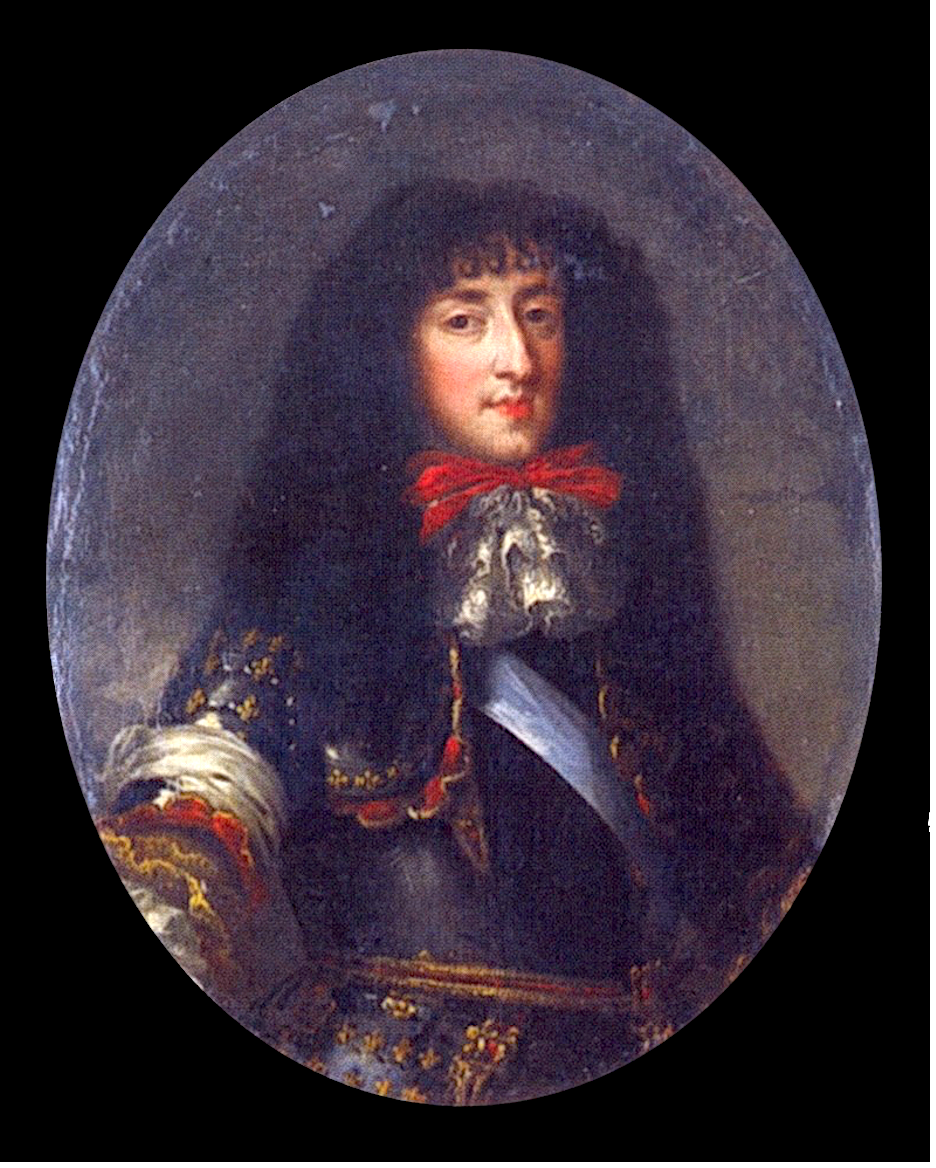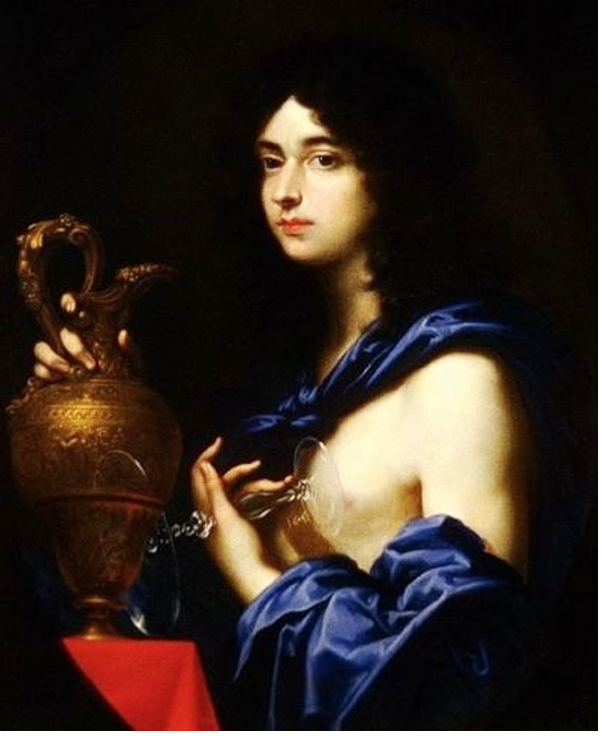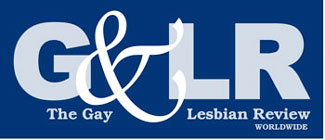THE MAN IN THE IRON MASK never existed. A prisoner of state under Louis XIV, he spent 34 years in the Bastille and may have been made to wear a velvet mask. Seventy years later, Voltaire alleged that the mask was iron and the prisoner had been the king’s elder, illegitimate brother. But it was Alexandre Dumas in the last novel in his D’Artagnan trilogy, Le Vicomte de Bragelonne (1840), who added the twist that the masked inmate was the King’s twin brother Philippe. In its adaptations, Hollywood distorted Louis into a tyrant who had to be replaced by his virtuous sibling with the aid of the musketeers. Louis Hayward was convincing in the double role in 1939, Leonardo DiCaprio less so in 1998.
Monsieur as Madame
Louis XIV did indeed have a younger brother named Philippe, but the king was never at risk of being supplanted. Philippe I, Duc d’Orléans, known as Monsieur, is one of history’s most notorious effeminates, whose affections and fortune were lavished on male favorites, from courtiers to opera dancers. In an age of fluctuating sexual identities and noblesse oblige, he was dutifully married twice and sired several children. Nevertheless, “the silliest woman in the world,” as he was called, was never taken seriously politically. From childhood, he was mad about female fripperies but did not dare dress as a woman in public because of his rank. Short and tubby, he wore as many rings, bracelets, precious stones, and ribbons as fashion allowed; his wig was enormous, black, and powdered, and rouge was discreetly applied. In private, he would put on lace caps, earrings and beauty spots, losing no opportunity to “drag it up” at costume balls, where his greatest pleasure seemed to derive from being humiliated, threatened, and mocked by his current paramour.

Portrait by Pierre Mignard.
His relationship with the Chevalier de Lorraine has been characterized as basically sado-masochistic. Unscrupulous, narcissistic, and notoriously jealous, Lorraine kept making greater and more brutal demands while Philippe delighted in the abasement and abjection. Ultimately, Louis had Lorraine locked up in a chateau in Lyon and then in the remote Château d’If (famous from The Count of Monte Cristo). Philippe blamed his young wife for insisting on his favorite’s imprisonment, and when she died the next year, rumor ran (falsely) that she had been poisoned by Lorraine. The Chevalier was recalled from exile.
Louis himself had a strong appetite for women and was fond of his bastards, ennobling them and promoting their careers. He often expressed his detestation for sodomites. Nevertheless, when his confessor urged him to evict them from his court, the King sighed: “Where am I to begin? With my own brother?” So he often turned a blind eye to Philippe and the many courtiers who shared his tastes.

Portrait by Baldassare Franceschini.
Following the Affair of Poisons, which revealed the aristocracy to be riddled with crime and debauchery,
Whether or not Louvois was thinking of the famous Sacred Band of Thebes, Louis realized that he could not deprive his army of its best generals—such as the burly Huxelles, who promoted good-looking junior officers and well-built man-servants; or Vendöme, who boasted far and wide of his preference to be buggered by farmhands, chair-bearers, and stable boys. Louis even congratulated him on surviving two operations for syphilis. They were but a few of the sodomites who had won battles, conquered towns, and gained the favor of the mob, like Prince Eugene of Savoy, one of the greatest strategists of his time. The Prince was known as “Madame Puttana” for making himself available to any interested young man.
France Turned Italian
Around 1678, an exceptionally bold group of adolescent lords, including Guy-Armand Gramont, Comte de Guiche, an intimate of Monsieur, decided to found a secret society whose statutes included total abstinence from women (but for less noble reasons than the gentlemen in Shakespeare’s Love’s Labours Lost). They wore a badge showing a man trampling a woman at his feet in imitation of the order of St. Michael, with the angel trampling the devil. This misogyny was partly for fear that women, born gossips, would give away their secrets.
There was a struggle for primacy among the founders. The Marquis de Manicamp claimed to have the most experience at the practice; the Duc de Gramont, Guiche’s brother, pulled rank as a duke and pointed to his reputation as the greatest sodomite in the land. The Chevalier de Tilladet pointed out that he was a Knight of Malta, itself an advanced degree in debauchery. Gramont was accused of loving his wife too much; he said he stopped loving her once she had an affair with his valet. All three were appointed along with the Marquis de Biran.
This foursome drew up the statutes of the order in a country house and, two days later, back in Paris, they presented their constitution. Its articles stipulated that all candidates for admission had to be “visited” by the four “grand priors” to guarantee that their bodies are sound and can “support the austerities.” Any sexual relationship with a woman will mean immediate expulsion. Any rank may be admitted. One remains a novice only “until the beard appears on the chin.” Marriage is allowed only for reasons of property and begetting an heir, but the member must not love his wife and will be allowed to sleep with her only once a week. All private affairs must be shared, but the “mysteries” of the order must not be revealed to anyone other than potential candidates. The grand priors get first pick of the guests and the others “must be contented with the leftovers from their table.”
Through the back channels of gossip, their secret was soon out. In summer 1682 a pamphlet declared “France is become Italian” and stated that there existed a confraternity of noblemen calling itself “The Holy Congregation of Glorious Pederasts”: “All the ladies had made their charms so accessible that the young men despised them … debauchery reigned in court more than anywhere else in the whole land and although the king had on several occasions expressed an inconceivable horror of these sorts of pleasures, that was the only case in which he was disobeyed.”
Princes of the blood and distinguished gentlemen rushed to be admitted. Among the first was the Comte de Vermandois, Louis XIV’s illegitimate son by Louise de la Vallière. In 1681, he was fourteen and as beautiful as his mother, and had been named Admiral of France. Rumor had it that he had first been debauched by Monsieur’s lover Lorraine. Vernandois was admitted, but, as an illegitimate child of the King, he requested that the rites of initiation be dispensed with. This was not allowed, but as a special favor he could choose which of the priors he preferred for his “visitation.” He was also permitted to designate his “partner in pleasure” from among the brothers. In gratitude, Vernandois spread word of the brotherhood to drum up candidates. This caused such an eagerness in high society to enter the order that word of it came to the King’s ear.
Noblemen Behaving Badly
Before the Sun King got wind of these goings-on, rumors about these extra-curricular activities had already scandalized the public. During one spree in a brothel, the Chevalier de Tilladet, the Marquis de Biran, the Duc de La Ferté, and the son of Finance Minister Colbert sodomized their favorite female prostitutes, bound one of them to a bed, placed a fuse in her vagina, and set it alight, deaf to the screams of their victim. They then caroused drunkenly through the streets all night, breaking lanterns. Stopping at the wooden bridge that led to the Ile de la Cité, they tore down its crucifix and tried in vain to set it on fire.

These depredations caused a great to-do. At first the mayhem was attributed to valets, no one “believing that men of rank were capable of something so horrible.” The brothel-keeper complained to minister Colbert and promised to go the King if he didn’t discipline his son. Colbert had the burn victim nursed and recompensed and hushed up the affair. But two or three months later, when talk had died down, a lackey of one of these scoundrels was arrested for theft. Under threat of torture, he admitted he had never forgiven himself for helping Colbert Jr tear down the crucifix. This admission saved him. Colbert feared that a death sentence would bring out the truth, so he pardoned the valet and personally thanked him for his discretion.
An even more revolting scandal then followed. In a brothel on Rue aux Ours, the gang of villains, “drunk as swine,” abducted off the street a little waffle-vendor whose looks appealed to them and tried to rape him. When the boy fought them off, one drew his sword and cut off his genitals. The murderer ran off while the victim died wallowing in blood.
The King was immediately informed. As soon as Louis heard of the brotherhood, he summoned his son Vernandois. Legend has it that he had him whipped in his presence, but in fact he questioned him “as a king and a father.” Like many in such a situation, Vernandois claimed to have been led astray and named a great many names. He was then sent to the Flemish front, where he died of a fever.
The King waxed particularly wrathful when he heard that the young prince de Conti had been solicited for the brotherhood. Age sixteen with a charming face, a gentle smile, blue eyes, and wavy hair, graceful and witty, he flirted with both men and women, making him as many enemies as friends. Conti was sent into forced residence with his family in Chantilly and forever forfeited the monarch’s favor. (Louis had never cared much for this highly gifted young man, perhaps out of jealousy.)
At first intending to execute the culprits, the King gave in to the pleas of their families and settled for expelling them from court and stripping them of their posts. The chief victims of the royal displeasure were exiled to their estates or their regiments. The Chevalier de Lorraine was ordered to keep away from Versailles lest he corrupt the Dauphin. La Ferté was reprimanded, Tilladet threatened with banishment from France at his first relapse, and the Chevalier de Colbert was slapped publicly by his father. As for the Marquis de Biran, one of the “grand masters,” his father found a worse punishment—he married him off. Only the ringleader, the Duc de Gramont, escaped the storm. Louis explained that he had become so detestable that whatever he did left the King indifferent, and to take notice would honor him too much.
Since by law sodomy was punishable by death at the stake, this was surprisingly indulgent for Louis, who insisted he loathed sodomy and proved ruthless to Protestants and Jansenists. The first two decades of his reign had been a time of courtly frolicking. Spectacles and amusements, hunts and balls, card parties and gallantries had made up much of a courtier’s life; but now Louis fell under the influence of the dévotes, an ultra-Catholic religious faction. Order and discretion were his goals. After morganatically marrying his children’s governess, the prudish Mme de Maintenon, he formally withdrew the court from Paris to Versailles. To be conspicuously pious was now the fashion, though it often served as a smokescreen. While a fortress mentality prevailed at Versailles, prostitution and homosexuality came to center around Monsieur’s former residence in Paris, the Palais-Royal. Young, good-looking valets and pages and wigmakers’ apprentices remained fair game for the displaced courtiers.
Monsieur eventually retired to his château in Saint-Cloud, attended by his favorites. He died of apoplexy in 1701 at age 61. In the streets they sang:
Philippe has died a bottle in hand;
The proverb therefore fails to stand
Which says as a man lives so he dies;
The opposite in this case applies,
If he’d died as he’d lived, if truth be told,
He’d have died with a prick up his bum hole.
References
Hammond, Nicholas. Gossip, Sexuality and Scandal in France (1610-1715). Peter Lang, 2011.
Lever, Maurice. Les bûchers de Sodome. Histoire des “infâmes.” Fayard, 1985.
Rohr, Zita Eva and Jonathan W. Spangler, eds.. Significant Others: Aspects of Deviance and Difference in Premodern Court Cultures. Routledge, 2022.
Laurence Senelick is author of The Changing Room: Sex, Drag and Theatre and editor of Lovesick: Modernist Plays of Same-sex Love.






